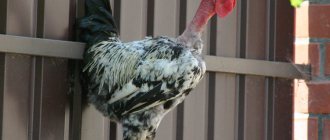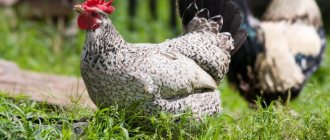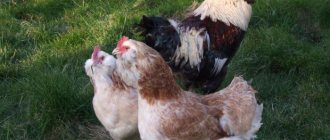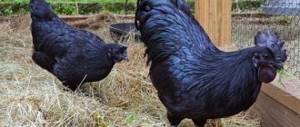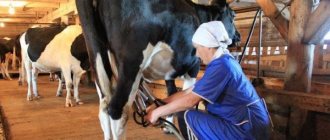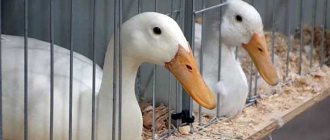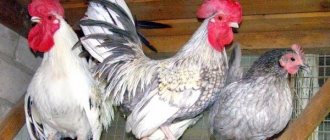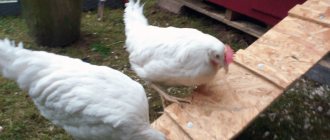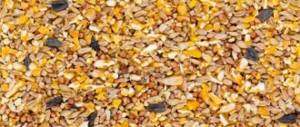Description of the naked breed of chickens
It is not easy to find a purebred naked-necked bird, and its cost is relatively high, so barenecks are not yet competitive with other meat and egg breeds.
Origin of the breed
Presumably the birthplace of the unusual bird is Spain. Bare-necked chickens came to Russia from Hungary and Romania 100 years ago. That’s why in the country chickens are called Transylvanian, although in other places they are usually called Spanish.
In Russia, the bird is common among the population in the southern regions
There is a version that the appearance of the bare-necked bird is due to the displacement of Indian fighting chickens with other breeds. It is also possible that nakedness is a genetic mutation that can be transmitted hereditarily. After its appearance, the owners of the bird, allowing special individuals into breeding, formed the breed.
Holo-necks are most common in Austria and Moldova.
Appearance
The birds are somewhat similar to turkeys. Those who see barenecks for the first time often mistake chickens for patients due to the lack of feathers on the neck and crop, with the lush plumage of the rest of the body. In reality, chickens do not have follicles on their bare skin.
The main distinguishing feature of the breed is the bare neck.
Chicks hatch with bare necks. An adult bird has exposed, rough, bright red skin with pronounced wrinkles. A small spot with feathers forms on the head behind the crest, like a cap.
On the front of the neck, near the crop, there is an island of feathers - a collar. There is no feather at the necks on the inside of the thighs and under the wings, which is convenient when plucking the carcass. The color of the bird is varied, including red and motley.
Be sure to read:
Russian Crested chicken breed: description, egg production, basics of breeding at home
Goloshka
The body of chickens is powerful and squat. The muscles are well developed. The wings are lowered down, loosely fitting to the sides. The head is compact, wide, with yellow-red eyes and a leaf-shaped crest - medium in females and large in males.
The bare-necked gene is classified as dominant. When birds are crossed with other breeds, chickens appear with bare necks.
Temperament
The chickens are calm, do not get into fights in the poultry house and do not show aggression towards humans.
However, barenecks are quite timid and anxious; they should be housed in a place protected from extraneous, sharp sounds. If a hen is stressed, she may reduce her egg production.
Bare-necked breed of chickens
Bare-necked roosters have a violent temperament. They do not tolerate other males on their territory - and not only roosters, but also drakes and geese. At a moment of particular excitement, they can attack the owner, which can be quite dangerous.
Origin and distinctive features
It is believed that the breed of naked chickens first appeared in Spain, but came to Russia from Romania, where it was grown en masse in past centuries. That is why another name that is used to refer to bare-necked chickens is Transylvanian chickens.
A distinctive feature of the breed is the complete absence of feathers on the neck and craw. This is the result of a mutation in the gene responsible for the formation of feather follicles in chickens. The trait is dominant and is steadily transmitted to offspring; chickens will be bare-necked even when crossed with other chicken breeds. The characteristic absence of fluff on the neck is already observed in day-old chicks; by this feature, their belonging to the breed can be unmistakably determined.
Adult Spanish naked chickens have no feathers not only on the neck, and in some individuals on the crop, but also in some places on the inner surface of the legs and under the wings. With age, featherless skin turns red, roughens and becomes covered with small folds.
There are feathers on the back of the neck near the head; they can lie close to the head or form a crest; on the lower part of the neck there is a so-called bow - a border of fluffy feathers. However, it is believed that the more open the neck and crop are, the more purebred the chicken is.
Spanish naked chickens:
- medium in size;
- standard build;
- with well-developed muscles;
- medium-sized leaf-shaped or rose-shaped comb;
- rounded convex breasts;
- low yellow or gray legs.
They have loose, loose plumage, which is why they are considered easier to pluck. According to the standard, it is unacceptable for a purebred bird to have feathers on the neck and legs, yellowish skin in “bare” areas, a dark face, eyes that are darker than expected, white earrings, and a steeply set tail.
The color of the plumage can be varied, to suit every taste: black, white, hawk, red, motley, partridge, blue with a border. Chickens with darkly colored feathers have dark red eyes, while chickens with light feathers have orange-red eyes. The naked chicken in the photo gives a clear idea of what the breed looks like.
Spanish collareds are larger in size
Productive and exterior characteristics
Chickens are versatile. A laying hen produces from 160 to 180 eggs with brown shells weighing 60 g per year. Birds begin to lay eggs at 5.5 months. The description of egg production is close to that of most universal breeds.
Adult roosters gain up to 3.5 kg, and chickens - up to 2.5 kg. Some males can grow up to 4.5 kg, but this weight usually adds to their fat, which is deposited in the bird due to poor nutrition and lack of physical activity. There is a lot of white meat on the carcass due to the high development of the pectoral muscles.
There is a lot of white meat on the carcass due to the high development of the pectoral muscles
According to the exterior, chickens should not have feathers on the neck, under the wings and on the inside of the thighs. The presence of feathers in these areas is a reason for culling. Also, a bird should not be allowed for breeding if it has dark eyes, white lobes and a crown-shaped comb.
Be sure to read:
Legbar chickens: description, characteristics of a bird that lays blue eggs
Productivity
The productivity of the naked-necked chicken breed, relative to eggs, is low . A good layer per year can produce no more than 160 eggs weighing from 55 to 60 g. The shell color is light brown. The first eggs from hens can be obtained at the age of 6 months. For meat birds, this is a fairly early sexual maturity, which is closer to the egg direction of the bird.
The bird's body weight is large and gains quite quickly , which is why there are naked-necked broilers, which are also called French naked-necked chickens. The weight of a cockerel is from 4 to 5 kg, females - from 2.5 to 3.5 kg.
The survival rate of bare-necked chickens also has a high rate . With proper rearing, 95% of the brood survive to adulthood, which is a good indicator.
Bird breeding
Goloshka
Poultry is not bred in poultry farms. You can meet the breed on personal farmsteads and in small farms raising chickens for sale.
To obtain a fully fertilized egg, 1 rooster per 10 hens is required. The bird's brooding instinct is almost completely lost, and an incubator is used to produce chicks. The incubation mode is standard, as for other breeds of chickens. The chicks hatch at 21 days.
Eggs begin to feed 2-3 days before hatching.
Appearance
The main distinguishing feature of the breed is the bare neck.
Representatives of the Spanish chicken breed have a unique plumage. On the body it does not differ from that which other birds have, but on the neck it is completely absent. This feature gave rise to the name bare-necked chicken breed. The bird's bare neck has an intense red color, which is only slightly inferior to the beard and crest.
The bare neck is a genetic feature that is formed during the intraovarian development of the bird. The chickens, having hatched, already have a sign of the breed and there is no fluff on their necks.
On the head, bare-necked chickens have an island of feathers that looks like a hairstyle. On the chest side at the base of the neck, birds have lush downy plumage, similar to a frill.
Hardy and unpretentious bird
The bird's earrings are bright, round, and its leaf-shaped crest is bright red. The Spanish woman's face is smooth, red or gray. The eyes are quite large red-red. The beak is dark, slightly curved downwards.
The bare-necked breed can have plumage of all colors
The bird's body is compact, with a well-developed chest and rounded belly. The wings are quite long, not adjacent to the body, hanging quite freely on the sides. The paws are distinguished by their power and strength. The plumage of bare-necked chickens comes in a variety of colors. They are:
- black;
- white;
- redheads;
- partridge;
- motley;
- gray;
- blue.
Deviations from breed standards are considered significant defects and such birds are excluded from breeding.
On a private farmstead, where there is no need to maintain the elite status of the bird, all birds are allowed to breed, since external defects do not affect productivity.
The number of feathers in Spanish hens is on average two times less than in ordinary chickens.
The attractive description of the breed makes it a dream for many breeders. It is not uncommon for a poultry farmer to acquire only a few individuals for his main flock of chickens, since the bare-necked chickens simply captivate him with their appearance.
Feeding barenecks
Goloshka
No special diet is required for poultry. The bird's diet should include grains, grass, root vegetables (boiled and chopped), zucchini, pumpkins and wet mash with whey or milk. To provide the chicken with minerals, it is necessary to add bone meal to the feed.
They provide food in the morning and evening in the summer, and also during the day in winter. Feeders are washed and disinfected once a week. Water in the drinking bowl is needed constantly. Change it once a day, after washing the drinking bowl.
Feeding
Young animals
Newly born bare-necked chickens are very sensitive to conditions, so the following rules must be followed:
- Good ventilation of the room, but without strong drafts.
- Maximum density - 25 pcs. per 1 m2 during the first month, the next month and a half - 17 heads, and then - no more than 10 individuals per 1 m2.
- The floor must be covered with bedding, preferably peat. Or you can use regular sheets of paper and pour well-sifted feed with corn grits directly onto them.
- The temperature in the room for the first 5 days must be about 29-30 degrees, then until the end of the second week of the brood’s life it can be reduced to 26 degrees. Subsequently, every week the temperature is reduced by 3 degrees so that by the end of the first month of life the chickens feel comfortable at 18 C.
Important! When a brood appears in the cold season, it is necessary to additionally use infrared lamps indoors for the first month of the chicks’ life.
As for the diet of young animals, follow these recommendations:
- Feeding during the first 1.5 weeks at least every 2 hours.
- Feeders and drinking bowls are attached to the wall at such a distance that the chicks can reach them on their own, but do not climb inside with their feet, since the ingress of bird droppings can cause illness in the young.
- After feeding, it is important to check the crops - if there are chicks whose crops are empty, they are fed individually.
- The remaining food is removed immediately after finishing the meal.
Menu for chickens in the first month of life:
- During the first days of life, food is made from hard-boiled eggs, crushed and mixed with 50 g of cottage cheese and 50 g of semolina or corn flour. This is the proportion for 1 chicken egg.
- As an alternative, you can also feed a mixture of chicken feed, to which crushed oatmeal and milk powder are added in equal proportions.
- On the 5th day of life, you can introduce greens into the diet, and a week later they make mash with yogurt or meat broth.
- From day 10, chickens can be given boiled grated potatoes, pumpkin and zucchini.
Important! During the first month of life, be sure to use crushed chalk or egg shells as a supplement, which will become a much-needed source of calcium.
Feeding and keeping adult chickens
Despite the fact that the naked-necked chicken breed is considered hardy, it is still necessary to provide them with comfortable conditions.
First of all, this concerns the temperature regime, so that the energy received from the feed is not wasted by the birds on body thermoregulation.
Conditions:
- The optimal temperature is 12-16 degrees with a humidity of 60-70%.
- At temperatures from +1 to +4, laying hens continue to lay eggs, but productivity drops by 20 percent.
- At temperatures ranging from minus 5 degrees, adult individuals survive, but stop laying eggs.
Regarding other indoor conditions:
- There must be a peat bedding on the floor, and it must be loosened from time to time.
- A good ventilation system must be installed in the poultry house to prevent air contamination from excrement.
- In the cold season, it would be a good idea to take care of additional lighting to ensure full daylight from 6 am to 8 pm. Lamps are suitable with a glow of 60 W, 1 pc. for every 6 m2 of area with a ceiling height of 2 meters. It makes no sense to provide more intense lighting, as this will provoke depletion of the nervous system of chickens. But the deficiency will also affect low productivity and insufficient gain of meat mass.
- Chickens are fed 2 times a day - in the first hour after waking up in the morning and in the evening 1.5-2 hours before turning off the lights.
The menu should include:
- Cereals.
- Wet mash.
- Boiled vegetables - zucchini, beets, pumpkin, potatoes.
- Vitamin supplements - bone meal, chalk.
Important! Feed consumption is calculated at the rate of 130 g per day per 1 adult chicken weighing up to 2 kg. Above this weight, another 10 g is added for every additional 250 g of bird weight.
Chicken keeping
In order for chicks to grow into healthy chickens, they need to be provided with the right conditions in the first two months of life. Chicks should be kept in a heated brooder, clean and dry. In the first week of life, chickens are kept at a temperature of +30 degrees, the second - at +28 degrees, and then gradually reduce the indicators to +18 degrees by the month. The cage must be cleaned daily.
Be sure to read:
The ideal meat breed is Kuchin Jubilee chickens
Chicken naked chicken
Feed, which can spoil, is given to chickens in the first 10 days once every 2 hours. The chicks always have crushed grain or dry starter feed. Water or milk stands there all the time. The diet for chickens is standard, as for other breeds.
Keeping adult chickens
An adult bird is kept in a poultry house with a free range. The chicken coop requires lighting and ventilation. Drafts and humidity are unacceptable. Bedding in the chicken coop is required. It is best to make it from peat and loosen it several times a week. It is permissible to cover the floor with sawdust or straw.
Chickens must be provided with roosts and nests inside the chicken coop. The length of the perch is calculated based on the fact that 1 bird should have at least 30 cm of perch length. Nests are made from round baskets or wooden boxes. The hen must fit completely inside them.
The diet for chickens is standard, as for other breeds
Complete cleaning of the poultry house is carried out in the spring. At this time, all the litter is replaced and the poultry house is whitewashed with quicklime for disinfection. Then the litter is only loosened and added if it is trampled down.
Advantages and disadvantages of the breed
Among the disadvantages of the bird, it is worth noting its strange appearance.
Advantages of the breed:
- versatility;
- high meat and egg productivity;
- good immunity;
- simplicity in content.
Among the disadvantages of the bird, it is worth noting the strange appearance and aggressiveness of some roosters. The difficulty in purchasing purebreds is sometimes considered a relative disadvantage.
Different types of Spanish chickens
By the definition of the name, the conclusion suggests itself that the birds to which attention is given in the material have a Mediterranean ancestry, but the fact that this is by no means an isolated single selection, but a group of crosses, is not known to everyone.
Occupying a niche closer to decorative than productive birds, they became quite widespread and gained no less popularity on the modeling catwalk. A certain exception is the goloshka (editor's note), but first things first.
Features of species characteristics are further in our article.
Minorca
The musical queen, if her name is any guide, can be distinguished from her friends by her luxurious black feathers and white earrings in her ears. All over the world, Minorca is considered one of the most popular chickens, because since its appearance, history has marked more than half a century.
In the USSR, in the second half of the twentieth century, special standards were defined for her regarding appearance and productivity, and her abilities serve to improve the quality of crosses. In Russia it is still bred to this day. The aesthetic appealed to private poultry farmers who keep beauties with a black-green tint. And then, it would be blasphemy to hide these unique domestic chickens from the public.
Andalusian Blue
The bird's body is graceful, slightly elongated. The cockerels have a luxurious red comb and a silky black muff on their necks. Females flaunt a comb hanging to the side and a more modest tail. The area near the ears is marked with white spots.
Possessing the most luxurious plumage with a characteristic tint puts this heroine in the ranks of decorative, since it demonstrates very good corresponding indicators, but the bird does not seem promising for industrial breeding. We have a detailed article about Andalusian blue chicken, read the link.
Naked Spanish Woman
There are no feather follicles in the skin of these birds - their necks up to the shoulders are devoid of feathers. Crossing with Leghorns helps suppress the naked neck gene, while increasing egg production.
Of all the relatives of the category under consideration, these are the most rare on farms, except on the private lands of exotic lovers. This is explained by the fact that most poultry farmers find the bare neck and resemblance to vultures to be more of a defect than an advantage.
Spanish Whiteface
This bird also has a black feather, but at the same time it has a snow-white muzzle, which is a distinctive feature of this species. White-faced birds are sometimes confused with Minorcas, but experienced poultry farmers are convinced that the tint of these birds is not greenish, but mostly bluish, and the spots on their faces are more extensive.
